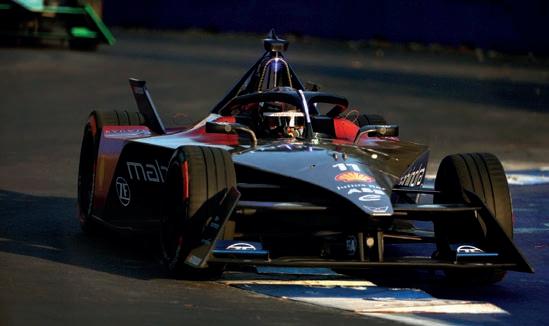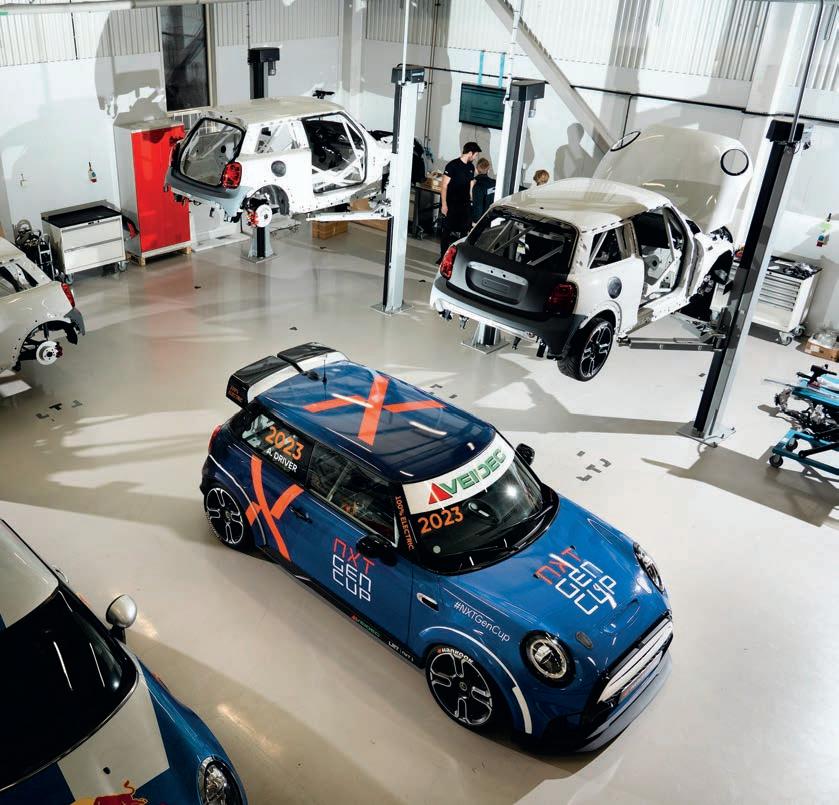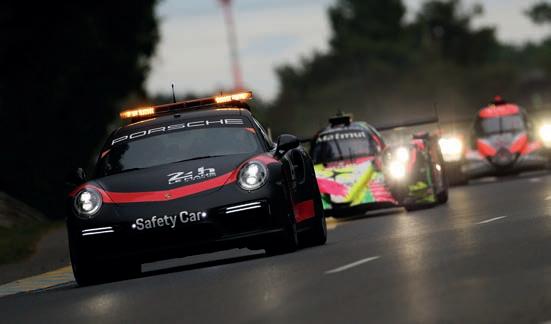
4 minute read
Diminishing returns
The value in attending F1 testing may have changed, but it’s still there
Going trackside during Formula 1 testing is undoubtedly great fun, particularly for my inner fan, but in real terms the activity creates much ado about very little, given that on every lap all teams are on different run schedules.
Unless finer details are known (which are invariably kept well hidden), a rapid Williams catching an unwieldy Red Bull is likely to be in qualifying trim, while the current Constructor Champion car is on a full race simulation.
True, there are telltale signs here and there, but these can usually be better picked up via track TV channels and the wall-to-wall global broadcasts that are now a fixture of testing. Gone are the days of private tests. Fans now have full access to all three days of running. The flipside to this is that the more ignorant amongst them then complain about a lack of continuous nail-biting action! That is clearly generation Netflix talking.
The upshot of this is the value of travelling to Bahrain for the full three days of testing – make that a dozen days as I needed to arrive the day prior, and then stay through to the race given the cost ineffectiveness of returning to Europe for just two days at home – lies not in heading for turns one or 11 on a regular basis, but in having full paddock access, and with it the direct interaction with team bosses, drivers and engineers.
Best of the rest
Still, whenever and to whoever one spoke of Max Verstappen and RB19, the combination was accepted as being in a class of their own, so much so that talk rapidly turned to ‘best of the rest’.
Although Monégasque driver, Charles Leclerc, told Racecar Engineering his Ferrari was quick in a straight line but paid the price in corners, the red car was generally reckoned to be next in line with particularly strong slow corner traction. As per 2022.
In those three words lies the key to the season. Bar changes to floor design due to rule amendments to reduce porpoising, the ‘new’ cars are fundamentally evolutions of what went before. As such, they look and sound similar, and no doubt feel similar to those behind the wheel.
True, weight has been shaved off here and there, and a few pointy bits made pointier, only seasoned observers can tell the differences between 2022 and ’23 cars at a glance.
That said, there is one glaring exception – and there always is one in F1 – in that the Aston Martin is more than simply an evolution of what appeared here a year ago at the dawn of the ‘new era’ for two reasons. Firstly, having introduced what was basically a new car that aped Red Bull’s heavily sculpted sidepods at last year’s Spanish GP, the ‘green team’ has taken the concept to the extreme with the AM23.
It showed, too. Paddock sages suggested the car could give Mercedes a real run for its money, particularly in the relentless hands of Fernando Alonso, and might even give Ferrari a headache. That should amuse the car company’s main board in Gaydon, as most members were recruited from Maranello after incoming Ferrari CEO, Benedetto Vigna, had a clear out.
the word ‘most’ seems accurate. At full chat, the 2023 car displayed some, but not all, of the bouncing that blighted its predecessor, and seemed slightly unwieldy, yet during a ‘glory run’ before the close of business on Saturday the seven-time champion briefly topped the times. An eighth title, however, seems some way off.
The back six
Of the remaining six teams, Alpine impressed with its superbly integrated A523. Could the team give Mercedes a headache? On test evidence, the answer is yes, but whether the Anglo-French outfit sustains the challenge over the season remains to be seen. Certainly, as with Aston Martin, long run pace was impressive.
Alfa Romeo (Sauber) also put up an impressive showing, much as per 2022 testing, but with less of the unreliability driven at the time by an obsession with weight saving. Indeed, the car was the only one on the 2022 limit, so it proved the C43 is user-friendly and, if the car’s cooling issues are resolved, it will be a strong midfield contender.
Up there with the red / white / black team was the black / red / white outfit using the same Ferrari powertrain and hydraulics / electronics, namely Haas. A lot more financially bullish this year after cutting a deal with Moneygram, Kevin Magnussen reckons the effect is already noticeable, and the team’s new-found consistency bears that out.
It would be flippant to suggest that AM technical director and aero guru, Dan Fallows, controversially recruited last year from Red Bull, had simply cut and pasted his Milton Keynes expertise before swapping green wrap for blue as the word is that the car’s major strength lies in ultra-low tyre degradation, particularly on long stints on softs. That points to more than simply aerodynamics, and some serious work by the vehicle dynamics team.
Lewis Hamilton suggested Mercedes had corrected most of W13’s ills, and his choice of
Which brings me to the final three: McLaren, whose performance over the three days was seriously concerning; AlphaTauri, ditto, albeit word is the team focused on race pace, not qualifying runs, and Williams. The latter tailed the times throughout, has a new (inexperienced) team principal in James Vowles and no technical director at time of writing.
McLaren’s issues are twofold. The floor regulation changes hit the team harder than most due to its original ‘edgy’ design, while Covid delayed the team’s facilities upgrade programme, so it is still using Toyota’s Cologne wind tunnel, despite being based in the UK. By the time you read this, the season will be under way, but the three days in Bahrain sure were fun while they lasted.










